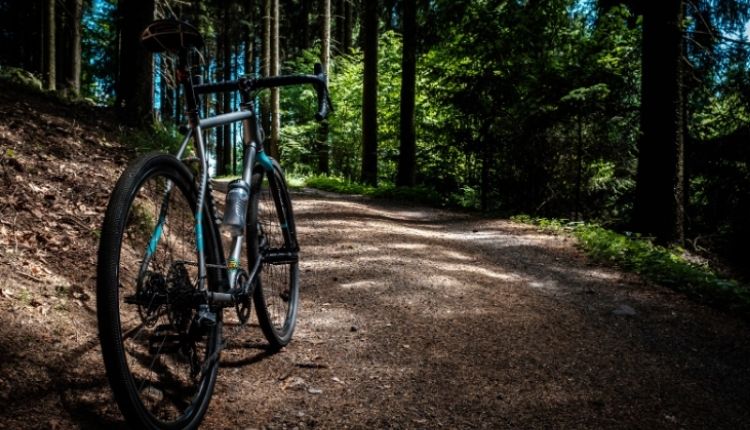A weekend trip is short, friendly, and light. The rider leaves on Saturday morning, sleeps once, and returns on Sunday with legs that still feel useful on Monday. The route favors quiet lanes and easy gravel. The kit fits into two small bags. Nothing requires specialist skills. The aim is to feel far from chores for a little while, then glide home with a clear head.
Planning That Feels Playful
Route planning can be fun rather than fussy. Weather, café hours, and train times become helpful constraints. The map turns into a little scoreboard that lights up as choices click together, a rhythm not unlike a funky time game live stream where timing matters more than flash. Two anchors keep stress low. Put good coffee near Sunday morning and water within two hours at all times.
Bike Fit Before Bike Bling
Any reliable bike works for a weekender if contact points are friendly. Bars, saddle, and pedals must match the rider’s body, not fashion. Gearing should allow a relaxed cadence on steady hills. Tires in the 35–45 mm range float over chipseal and roll quickly on tarmac. Lights stay fixed and visible. Bags should not sway or rub. A quiet bike makes every kilometer feel easier.
Packing With a Clear Rule
Every item earns its ride. Pieces that solve two problems win space. Layers beat single heavy garments. Repairs focus on likely issues, not every nightmare. If a tool would help once in a hundred rides, it stays at home and the route is chosen to make that decision sensible. The reward is simple loading on Saturday and simple packing on Sunday.
Pocket Kit: Seven Essentials That Punch Above Their Weight
- Sleep trio. Compact bag or quilt, light pad, and a small shelter that pitches fast.
- Warmth layer. Thin puffy or fleece that also works as a pillow inside a dry sack.
- Wet plan. Rain shell, waterproof socks or covers, and a liner bag for electronics.
- Fix and roll. Tube, patches, levers, multi-tool with chain breaker, quick link, mini pump.
- Food basics. Cold-soak jar or tiny stove, long spoon, day-one dinner, oats or bars.
- Light and sight. Charged front and rear lights, headlamp, reflective strap, simple glasses.
- Small civility. Hand wipes, tiny trash bag, and a compact first-aid pouch.
Food, Water, and an Easy Pace
One bottle per hour in warm weather is a steady baseline. Refill whenever a tap appears rather than chasing perfect stops. Snacks live in a top-tube pouch so pedaling rarely pauses. A simple dinner lands early enough that sleep runs warm. Pace stays conversational. Photo breaks double as stretches. Ending the day before dusk keeps camp chores calm and animals unbothered.
Choosing the Shape of the Loop
The best weekender is a loop with shortcuts baked in. Towns appear every 25 to 30 kilometers. Climbing is steady rather than spiteful. Campsites sit near running water and morning coffee. Tailwind on day two is planned by checking the forecast and spinning the loop accordingly. Three bailout points allow a dignified exit if weather flips or time runs short.
Route Tweaks: Five Easy Wins for a Smoother Ride
- Two-hour rhythm. Place water, food, and shelter options at regular intervals.
- Clockwise logic. Finish with a gentle descent and a likely tailwind.
- 70/30 mix. Keep roughly seventy percent paved and thirty percent smooth gravel.
- Quiet crossings. Hit big roads at off-peak times with wide shoulders.
- Camp near coffee. Sleep within ten kilometers of a bakery or café on Sunday.
A Sample Overnight That Just Works
Day one starts late morning near a rail stop. The route follows a river path, climbs a ridge for a short view, and drops into a small town for groceries. Camp is legal, sheltered, and close to water. Day two rolls at sunrise through farm lanes and returns along a canal. A late-morning train remains a safety net. It usually stays unused because the loop is kind.
Etiquette That Travels Well
Leave places better than found. Camp only where permitted. Keep noise low after dusk. Close gates as they were. Yield with a smile to walkers. Give livestock space. Share the route and return time with a friend before rolling out. Courtesy is light to carry and makes cyclists welcome when they return next month.
Weather Without Drama
Rain favors more tarmac, fewer clay tracks, and cafés that open early. Heat asks for an extra bottle and shade at noon. Cold needs windproof layers plus a dry backup for hands. The core kit stays the same. Only emphasis changes. Flexibility, not heroics, keeps weekends pleasant.
Why This Approach Sticks
A tiny routine beats a grand plan. A balanced bike, a short packing list, and a loop with built-in margin turn two ordinary days into something restorative. The rider comes home relaxed, not wrecked, the bike needs a rinse and a chain wipe, and next time requires little thought. That is the charm. The same checklist works again, just with a different view at sunrise.

